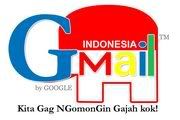Tuesday, August 27, 2002
Dental Device Cuts Pain, Lengthens Injection Time
source: Pediatric Dentistry 2002;24:315-320.
A computerized injection device can lessen the pain children endure at the dentist`s office, but it takes longer to administer than the traditional anesthetic jab, which may mean kids who receive it will spend more time squirming in the dentist`s chair.
"We found that it actually helps reduce the discomfort during the initial injection (of anesthesia)," study lead author Dr. Keith D. Allen, a professor of pediatrics and psychology at the University of Nebraska Medical Center in Omaha, told Reuters Health.
The computerized device, called the Wand and made by Milestone Scientific, Inc., injects the numbing solution into the gums at the slowest possible rate. The device is available to dentists, but little research has been conducted on whether it is useful for reducing pain among young children.
To investigate, Allen and his colleagues conducted a study comparing the Wand to a traditional anesthetic injection. Milestone Scientific helped fund the research, which is published in the August issue of the journal Pediatric Dentistry.
Forty children requiring local anesthesia for dental procedures were randomly assigned to receive Wand injections or traditional injections. The children ranged in age from 2 to 5.
The investigators measured signals of pain such as moaning, crying and moving.
Children given the Wand injection cried less and were less disruptive, the researchers found. For example, none of the children using the Wand required some kind of restraint during the first 15 seconds of the shot, while nearly half the children receiving a traditional shot did.
But Allen noted that the Wand injection takes an average of 3 minutes to administer. A traditional shot may hurt more, but takes only around 15 seconds.
"With preschoolers, because the Wand takes so much longer, by the time you`re done, those kids are becoming a little fidgety," he said. "It`s faster to get a shot--but it hurts more. It takes a little longer to do a Wand injection, but you end up with a kid who is less disruptive and in less pain."
However, this lengthy injection time may outweigh the benefits of reduced pain, noted Dr. Joel Weaver, a spokesperson for the American Dental Association and the director of anesthesiology at Ohio State University`s College of Dentistry. "This Wand can be beneficial in some children, but the advantages seemed to go away as the injection continued for a long period of time," he told Reuters Health.
For example, at 45 seconds into the injections, 80% of patients receiving injections from both the Wand and the regular injection became disruptive.
However, Allen contended that reducing the extreme pain of the traditional shot and adding a period of only modest discomfort may help prevent children from developing a fear of the dentist. "You try to avoid experiences that are really discomforting for kids," he said, "because you want them to associate going to the dentist with good things."



